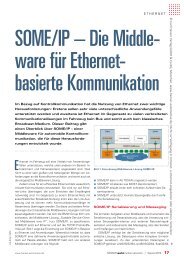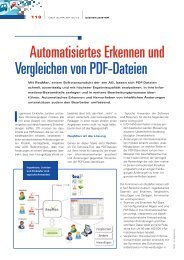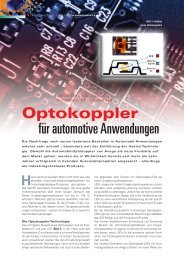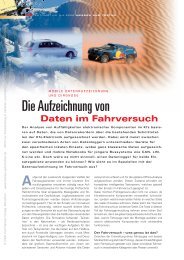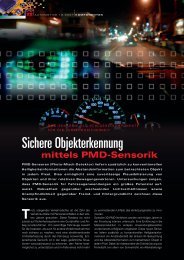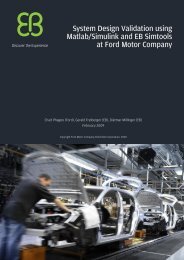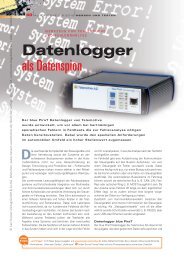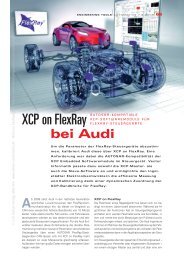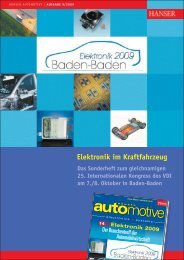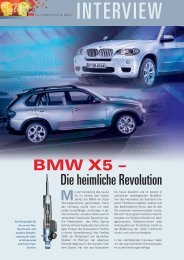Download - HANSER automotive
Download - HANSER automotive
Download - HANSER automotive
You also want an ePaper? Increase the reach of your titles
YUMPU automatically turns print PDFs into web optimized ePapers that Google loves.
© Carl Hanser Verlag, München www.hanser-<strong>automotive</strong>.de Nicht zur Verfügung im Intranet- und Internet-Angeboten sowie elektronischen Verteilern<br />
20lA UTOMOTIVE 2008l SPECIAL EDITION FLEXRAY<br />
Creating FlexRay COM Stack<br />
Configurations<br />
A FlexRay controller typically offers, or addresses via DMA access, several<br />
kilobytes of buffer memory. AUTOSAR defines a comprehensive set of layers<br />
to manage FlexRay communication in an ECU, from high-level signal<br />
management in the COM and handling of large data packets in the Transport<br />
Protocol layer down to the FlexRay Interface Layer for management of<br />
real-time interfaces and the hardware abstraction in the FlexRay Driver<br />
layer. But how can we efficiently allocate the FlexRay buffer memory of an<br />
ECU to the communication frames transmitted and received by an ECU?<br />
How does this affect the CPU load of this ECU, considering that each access<br />
to a communication buffer creates some work for the CPU?<br />
The Allocation Challenge<br />
The challenge itself is illustrated by an example: Assume<br />
a “telephone service” shop where 10 telephone<br />
booths are available for customer use and we are<br />
responsible for assigning customers to phones. Customers<br />
can “transmit” by making phone calls there, or<br />
“receive” by taking incoming calls there. How can we<br />
ensure that the use of the booths is optimized?<br />
Since we know our customers, we try to plan ahead: We<br />
have to exclusively reserve a booth for each of our “very<br />
important” customers. Whenever they require a phone,<br />
for ECUs in Complex<br />
Networks<br />
we need to have a phone booth available for them. Some<br />
customers are known for their short phone calls, usually no<br />
more than a few minutes. With regard to this additional<br />
information or “constraints”, we are able to develop efficient<br />
strategies for allocating phones to the customers.<br />
This illustrates the challenge that needs to be solved for<br />
complex real-time networks: We have a limited number of<br />
buffers (phone booths) and a large number of communication<br />
frames (customers), transmitted or received by the<br />
FlexRay communication controller (the shop) of our ECU.<br />
The buffers have to be allocated to the frames in a way so



